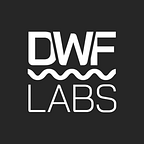Exploring the Potential of SocialFi: Decentralising Social Media
During this year’s EthGlobal Waterloo 2023 conference, Vitalik gave a speech expressing his concerns about the current web3 SocialFi space. He shared that existing web3 social Dapps may not be sufficient to replace their web2 counterparts.
He also suggested to builders to try iterating a new social Dapp using Web3’s unique features. The goal is to build a social app which is 10 times better than its Web2 counterparts.
At DWF Ventures, one of our main investment focuses is non-financial consumer Dapps. This led us to explore the SocialFi sector, particularly social media. In a previous thread, our team discussed web3 social media, echoing Vitalik’s concerns and encouraging the use of blockchain innovations and unique features to create a brand new Dapp.
In this article, we continue to examine the unique aspects of blockchain technology and uncover its potential to revolutionise social media, transforming the user experience for everyone.
Brief Overview of Web2 Social Media Platforms
Based on one of the most cited definitions of social media,
“Social media is a group of Internet-based applications that builds on the ideological and technological foundations of Web 2.0, and that allows the creation and exchange of user-generated content.”
– Kaplan AM, Haenlein M. (2010)
The definition encapsulates social media platforms like Facebook, Instagram, Twitter, YouTube, Snapchat, and TikTok. These platforms provide us with multiple feeds that constantly deliver information and keep us engaged throughout the day. Amongst the group of social media applications, it can be further divided into eight main verticals:
- Content Communities — Pinterest, Flickr, Youtube, TikTok, Soundcloud, Jamendo
- Collaborative Projects — Wikipedia, Github
- Blogs — Wordpress, Blogspot, Substack
- Microblogs — Twitter
- Social news websites — Reddit, Digg
- Virtual worlds — World of Warcraft, Second Life, Bondee, Clubhouse
- Social networking sites — Linkedin, Facebook, Myspace
- Commerce communities — Amazon, eBay, iStockPhoto, Shopify
In web2 social media, users interact typically interact with platforms through this bundle:
Currently, web2 users willingly give away a significant amount of their information and social influence to social media platforms. However, this data remains isolated within each application, requiring users to start from scratch when using new apps. The lack of transparency in algorithms and the absence of public code sharing also contribute to these challenges. These issues are proven real with the publication of Twitter Files that exposes the lack of neutrality and transparency on web2 social media platforms.
Web3 is a game-changer for social media
Compared to web2, web3 reinvents users’ interaction with social media.
In web3 social media, users’ accounts become the primary means of interacting with the blockchain. The social media application takes on a different role, acting as an interface for account identity and algorithms. Rather than relying on a centralised trusted third-party (TTP) database, web3 social media platforms utilise the blockchain as a public database. This enables open verification and facilitates the seamless transfer of data between various social media applications.
The web3 social media bundle completely flips the current relationship dynamics between applications and users in the web2 social media landscape. Users are no longer confined to specific applications as they gain access to codes, algorithms, their own content, and social capital.
Win-Win Scenario for Stakeholders in Web3 social media
Apart from users, content creators and builders can now participate more dynamically in the social media landscape. Blockchain technology allows smart contracts to automatically pay out royalties via NFTs without splitting fees with a TTP. Since web3 projects are often open-sourced, builders can easily access codes on the relevant space to compose a new application if required. Builders also do not need to fret about growing users as they can easily port over to a new application with their social capital.
Potential ways Web3 social media platforms evolve
Social media has come a long way from its early days as “Usenet” in 1979, a basic network for computer discussions. From non-interactive articles and with an image upload limit of 6144 KB on 4chan, the definition of social media has evolved and adapted with the three main driving forces:
- Advancement in technology
- Economic Growth
- Social & Cultural Influence
The limitations encountered by web2 social media during its evolution share similarities with the current limitations of web3. The absence of on-chain data storage is reminiscent of the past file size limits for uploads. The inability to handle large-scale transactions brings to mind the limitations of servers and gateways on forums. The expensive gas fees echo the high costs associated with internet usage in the early days.
By recognising these parallels, we can identify the driving forces behind web3 and outline potential factors that could contribute to the development of an ideal platform for web3 social media.
Web3 social media is ready
The potential factors necessary to catalyse the first wave of one billion web3 social media users are already in motion. Given the recent view limitations on Twitter and Reddit API & moderators fiasco, the demand for web3 social media is at its peak, presenting an opportune moment for its emergence.
Above, we have mapped some popular web3 alternatives in the current social media landscape for users’ reference. At DWF Ventures, we are enthusiastic about supporting and investing in the next superapp of web3 social media. Furthermore, we are dedicated to investing in teams that push the boundaries of blockchain technology to bring the vision of web3 social media to life.
For teams seeking a partner aligned with creating value for the space, feel free to reach out to DWF Ventures. Interested parties can pitch their project on our website at https://www.dwf-labs.com/ventures
